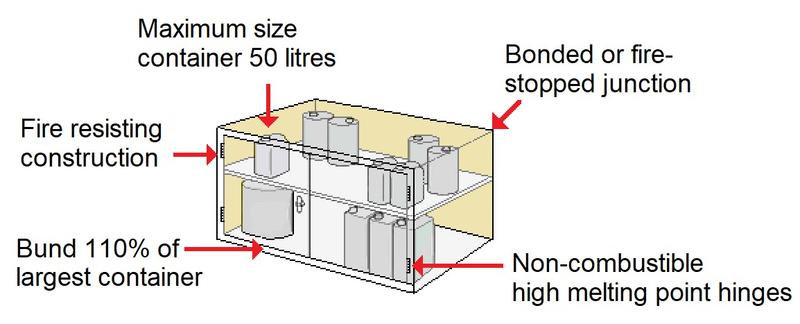The Responsible Person must make sure a risk assessment has been undertaken to determine the quantity of highly flammable liquids that can be justifiably stored in any working area.
The objective is to ensure that in the event of an incident, people can safely escape from the laboratory. The risk assessment should therefore take into account:
- ignition sources in the work room and the potential fire spread in the event of ignition
- the properties of the materials to be stored or handled in the working area
- the amount of flammable liquids being handled that may be accidentally released or spilled
- the means of escape from the laboratory or working area, e.g. limited single direction of escape or two directions of escape, unimpeded exit route/s, and travel distance to the outside of the room
- the size of the laboratory or working area and the number of people working in it
- exhaust ventilation provision in the laboratory or working area
- the fire performance of the storage cabinet
- the arrangements for closing the cabinet in the event of a fire
- the maximum quantities that may be stored in cabinets are 50 litres for extremely, highly flammable and flammable liquids with a flashpoint below the maximum ambient temperature of the laboratory, and no more than 250 litres for other flammable liquids with a higher flashpoint of up to 55°C
- for mixed storage all the materials being stored should be considered as being the same material as the one with the lowest flashpoint



